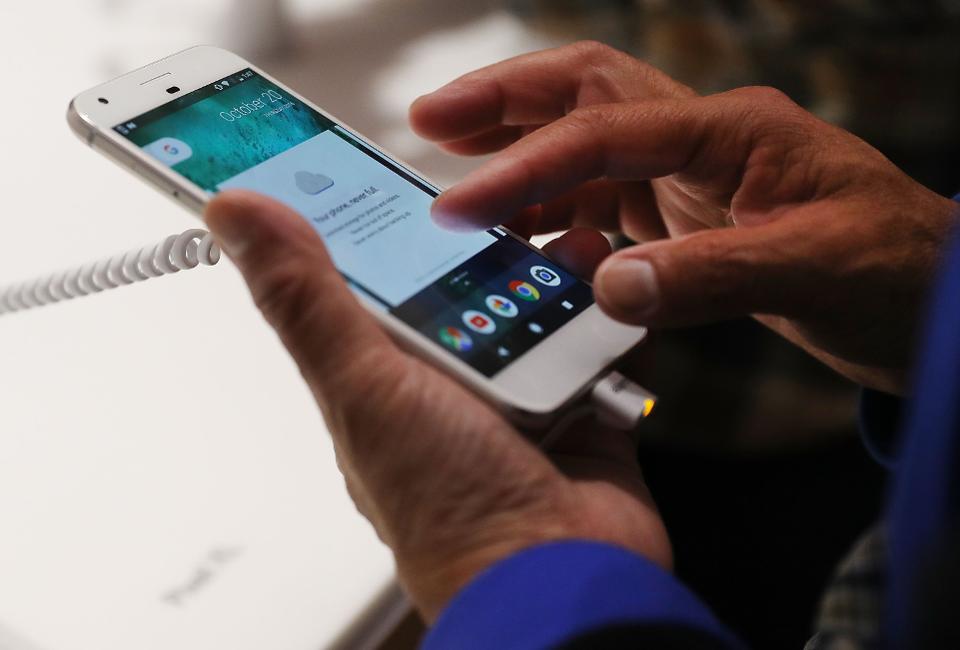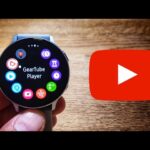
A person tries a new Google Pixel phone at the Google pop-up shop in the SoHo neighborhood (Photo by Spencer Platt/Getty Images)
Taking a look back at seven days of news and headlines across the world of Android, this week’s Android Circuit includes the latest details on the Galaxy Note hardware and pricing, new details on the Google Pixel 2 screens, the Nokia 6’s potential worldwide release, the OnePlus 5 being compared to its predecessor, the EU’s anti trust cast and the implications for Android, Microsoft’s latest Android advances, and why ten years of iPhone is still beaten by Android.
Android Circuit is here to remind you of a few of the many things that have happened around Android in the last week (and you can find the weekly Apple news digest here).
Galaxy Note 8’s Massive Price Tag
Samsung’s Galaxy Note 8 looks set to be one of the most advanced smartphones on the planet when it is announced in August, But the technology is not going to come cheap and an unlocked version of the phablet is going to comfortably cost a four figure sum. Forbes’ Gordon Kelly reports:
Posting on VentureBeat, famed leaker Evan Blass (aka @evleaks) states that Samsung is currently informing partners that the model will be “its most expensive cellphone yet” and retail for €999 (over $1,100).
Blass claims says the pricing comes via “an individual briefed on the company’s plans” and his long (and highly accurate) track record means we should take this information seriously. The flipside to this huge price tag is Galaxy Note 8 owners look set to get a lot for their money.
More on the pricing here.
Note 8 Fingerprint Features On The Rear
Thanks to the various leaks of schematics and rendered images we have a very good idea on the design of the Note 8. That means the question over the fingerprint scanner has been quietly answered, because it can be seen on the rear of the design. Samsung’s shot at innovating with a screen-based fingerprint reader looks unlikely to happen this year:
As previously discussed here on Forbes, Samsung is having to back down from placing the fingerprint sensor under the screen of the upcoming phablet. If this had been achieved it would have given Samsung an impressive technological ‘first’. Unfortunately it has been reported that the part of the screen with the sensor was not able to be color-matched to the rest of the screen.
The Galaxy Note 8 will retain the expansive and dominant screen, but the requirements in the Android specifications for a fingerprint scanner mean that it has to go somewhere else. And Samsung’s answer appears to be ‘put it next to the camera on the rear of the device’.
My thoughts on the issue are here.
Pixel 2 Screens Revealed
As well as backing up the claims of an OLED screen, details from the Pixel 2 and Pixel 2 XL supply lines confirm the physical screen of Google’s own 2017 handsets. I’ve taken a closer look at what this means for the smartphones:
The smaller Pixel 2 is expected to support a 4.97-inch screen, broadly similar to the 5-inch FHD panel used in 2016’s model. The larger Pixel 2 trumps the 5.5 inches of the Pixel XL with a 5.99-inch QHD screen. These screens are expected to be supplied by LG (reports Mario Tomás Serrafero for XDA Developers), while the handsets will again be manufactured for Google by HTC.
…Although three models were initially discussed, the Pixel 2 family looks to have settled on a ‘regular’ smartphone and a ‘phablet’ device to meet market expectations. It also allows the Pixel 2 line to draw a direct comparison to families such as the Android powered Galaxy S8 and S8 Plus, and presumably Apple’s update to the iPhone 7 and 7 Plus which should be announced in the weeks before the Pixel 2.
More details here on Forbes.
Nokia 6 Set For Worldwide Release
Launched into the Chinese market at the end of CES 2017, HMD Global’s first Nokia-branded smartphone appears set for a worldwide release next month. The mid-range handset could be ready to show up on Amazon, reports Paul Sawers:
The Nokia 6 will be made available exclusively through Amazon for $229 in “early July,” with only two color variants available at first — black and silver. It will also be made available in blue and copper later in the year.
There is nothing particularly standout about the device: It ships with Android Nougat and sports a Qualcomm Snapdragon 430 chipset, dual-SIM, 3GB of RAM, and 32GB of storage — expandable up to 128GB via the MicroSD slot. It also has a 5.5″ IPS LCD screen (full HD at 1920 x 1080), a 16MP rear-facing camera, 8MP front-shooter, and a 3,000 mAh battery.
OnePlus 5 Versus The OnePlus 3T
The recent launch of the OnePlus 5 (reviewed here) brings the Shenzhen-based manufacturer’s flagship handset into line with the current ‘top’ specs. That said, six months ago it refreshed its line-up with the launch of the OnePlus 3T. How much as changed since then? Gordon Kelly makes the comparisons, including the new dual camera at the rear:
With the relatively subtle changes to the OnePlus 5 display and design, it is up to the camera to provide the biggest upgrade from the OnePlus 3T and OnePlus 3:
* OnePlus 5 – Rear: 16 MP, f/1.7 aperture, 1.12 µm, EIS (gyro) and 20 MP, f/2.6, 1.0 µm 2x optical zoom, no OIS and dual-LED flash.
* OnePlus 3T – Rear: 16 MP, f/2.0, OIS, LED flash. Front: 16 MP, f/2.0, 1.0 µm pixel size, 1080p
Yes that’s a lot specifications. The upshot however is the OnePlus 5 can deliver 2x optical zoom (via a slight cheat) and combine both its rear camera to deliver a Portrait Mode (think heavy background bokeh to mimic the effect of a DSLR) similar to the iPhone 7 Plus.
Read more on the two devices here.

Ewan Spence
OnePlus 5 (image: Ewan Spence)
The Impact On Android Of The EU Antitrust Case
While this week’s ruling from the European Union’s Antitrust Regulators does not have a direct impact on Android, the EU is in the process of looking at AdSense and Android. The ruling points towards the EU’s attitudes to the Mountain View dominance.
The EU ruling is a warning shot for two on-going EU probes into Google’s Android mobile operating system and AdSense ad system, said Richard Windsor, an independent financial analyst who tracks competition among the biggest U.S. and Asian Internet and mobile players, including Google.
“If the European Union turns around and says Google can no longer bundle its Google Play app store as a default feature on many Android smartphones, this opens up the market to other handset makers to put their own software and services front and center on their phones,” he said.
Fortune has more details.
Microsoft Improves OneNote For Android
Microsoft continues to build up and improve its offerings for Android. This week saw a major update to its note-taking and digital scrapbooking application OneNote. As Sean Chan reports, the Android app has caught up with the other clients, as well as bringing in a web snipping tool:
Today, the company has started rolling out the enhanced design for the OneNote app to Android smartphones as well. The new and improved OneNote design offers a simplified navigation system and improves accessibility for users with assistive technology across all platforms, and that includes Android phones, too.
In addition to the improved design, Microsoft is also bringing the OneNote Web Clipper to Android. The app now integrates into the share system for browsers, which means you can now save entire web pages to OneNote just like you can on the desktop thanks to the OneNote Web Clipper.
More at MS Power User.

Microsoft PR
Microsoft advertises OneNote’s cloud capability (image: Microsoft.com)
And Finally…
In the week where every publication is remembering that it has been ten years since the first iPhone went on sale, Seth Fiegerman highlights that in terms of dominance, Android is far and ahead the more successful platform.
Apple created the modern smartphone as we know it, but Android went on to dominate the market through numerous partnerships with carriers and lower prices. In the first quarter of this year, a staggering 86% of smartphones sold worldwide ran on Android, according to data from Gartner.
What happened next? Read on at CNN.
Android Circuit rounds up the news from the Android world every weekend here on Forbes. Don’t forget to follow me so you don’t miss any coverage in the future, and of course read the sister column in Apple Loop! Last week’s Android Circuit can be found here, and if you have any news and links you’d like to see featured in Android Circuit, get in touch!
Follow me on Facebook. Find more of my work at ewanspence.co.uk, on Twitter, and Linked In. You should subscribe to my weekly newsletter of ‘Trivial Posts’.
[“Source-forbes”]










